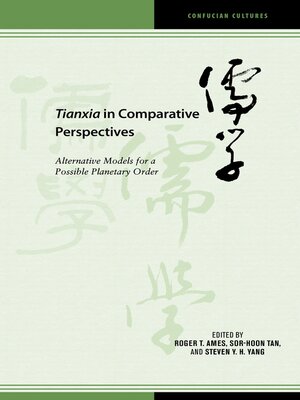Tianxia in Comparative Perspectives
ebook ∣ Alternative Models for a Possible Planetary Order · Confucian Cultures
By Roger T. Ames

Sign up to save your library
With an OverDrive account, you can save your favorite libraries for at-a-glance information about availability. Find out more about OverDrive accounts.
Find this title in Libby, the library reading app by OverDrive.



Search for a digital library with this title
Title found at these libraries:
| Loading... |
Tianxia—conventionally translated as "all-under-Heaven"—in everyday Chinese parlance simply means "the world." But tianxia is also a geopolitical term found in canonical writings that has a deeper historical and philosophical significance. Although there are many understandings of tianxia in this literature, interpretations within the Chinese process cosmology generally begin with an ecological understanding of intra-national relations that acknowledge the mutuality and interdependence of all economic and political activity.
This volume contextualizes the tianxia vision of geopolitical order within a variety of strategies drawn from a broad spectrum of cultures and peoples. The conversation among the contributors is guided by several central questions: Is tianxia the only model of cosmopolitanism? Are there ideas and ideals comparable to tianxia that exist in other cultures? What alternative perspectives of global justice have inspired Western, Indian, Islamic, Buddhist, and African cultural traditions? The fundamental premise here is that in order for a planetary tianxia system to be relevant and significant for the present time and for our vision of the future, it must acknowledge the plurality of moral ideals defining the world's cultures while at the same time seek practical ways to formulate a minimalist morality that can provide the solidarity needed to bring the world's people together.






